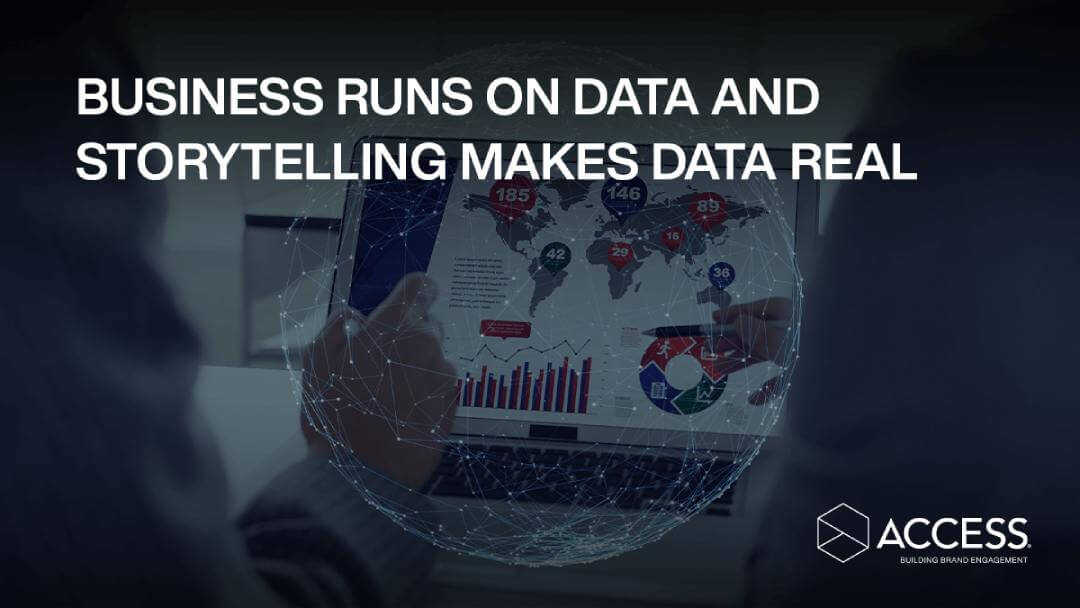Maybe the world runs on Dunkin’—but our businesses run on data. Yes, data, and your eyes are already glazing over. Nothing beats the anticipation of reviewing analytics unless maybe it’s waiting for cement to set.
Data can be overwhelming, and probably even more overwhelming when you have to present it to your company’s stakeholders. Right now, when companies are using analytics to chart the course businesses or whole industries will take moving forward, data has never been so critical.
Exhibition marketing has always run on data. Data that tracks the quality and quantity of exhibit visitors, data that measures shifts in preference and buying habits due to an exhibit visit, data that penetrates the influence of social media during a show, data that provides competitive intelligence.
But now, data is the lifeblood of exhibition marketing as it attempts to replace the value of live face-to-face, at least temporarily, with a virtual experience. And as far as we can tell, that virtual experience will become part of a hybrid presence when live events resume.
With all this on the line, the demand for data has never been stronger. And yet, how do we deliver the data to the stakeholders asking for it in a meaningful way?
We do it by (wait for it) STORYTELLING! (Actually, this post is a really good storytelling refresher!)
Right. Storytelling. As if you haven’t heard enough about storytelling, right?
Here’s the reason that storytelling is the way to deliver data: You are talking to people. You are taking numbers that tell your “what” to people who are interested in “why.”
Have you ever made a data presentation and realized about one-third of the way through that you were losing the attention of your audience? One reason this happens is your audience can’t see the relevance of the data. They don’t understand the impact your analytics have on your business and your industry. Right now, you can’t afford misunderstandings as you craft new ways to reach your market. You are sailing in uncharted waters, and you need to communicate not only the routes you are taking but also where you hope to arrive.
How can you craft a story that will show that your data is more than mere numbers? Here are elements that have to be part of storytelling with data.
- Be mindful of your audience. You already know how to do this because you profile the attendees at your shows and develop personas to touch on what matters to them. Understanding the concerns of your internal audience involves the same insights.
- Help your stakeholders visualize the data. You can create a visualization with your words as well as with a well-designed image. Not with a lot of charts and graphs, but perhaps with a meaningful infographic, something that will stick in the minds of your audience and give them something to remember.
- Appeal to your audience on both an intellectual and emotional level. Intellectual? Sure, it’s data. You get it. But the emotional appeal has to provide specific situations so that your audience can see how this data is showing current performance metrics as well as the way forward. Show them how the data plays a part in their lives and contributes to their mission.
- Because the face-to-face experience is not possible right now, you don’t throw out the whole concept of an experience. As a matter of fact, the demands of providing an experience while your program is virtual is critical. Data can help you do this in a way that resonates with your market.
- Start with the basics. Set the scene and move forward to more complex possibilities. But above all, strive for simplicity. KISS should be your motto. You are not talking down to your audience by making the data accessible.
- Before COVID, marketers talked a lot about empathy. Since COVID, empathy has become one of the most important aspects we can bring to any interaction, personal or professional. We are all, to one extent or another, insecure and worried about the future. Remember that as you tell your story. You can be empathetic and reassuring without painting a false scenario.
- Be selective with your data. Usually, our treasure trove of data is more than any person can share at one time. Make sure that your story is built on the most relatable metrics, the ones that will give your audience a clear overview of the situation.
- A challenge-solution framework is always a good story driver. Use your data to demonstrate how harnessing metrics can solve problems.
- Provide context for your audience. Help them understand why what you are telling them matters—not just to you but to all of you. By providing context, you are enabling learning.
- Along with context, try to involve people when you are talking about data. Use examples. Create value for your audience and help them understand the outcomes that the data indicates.


